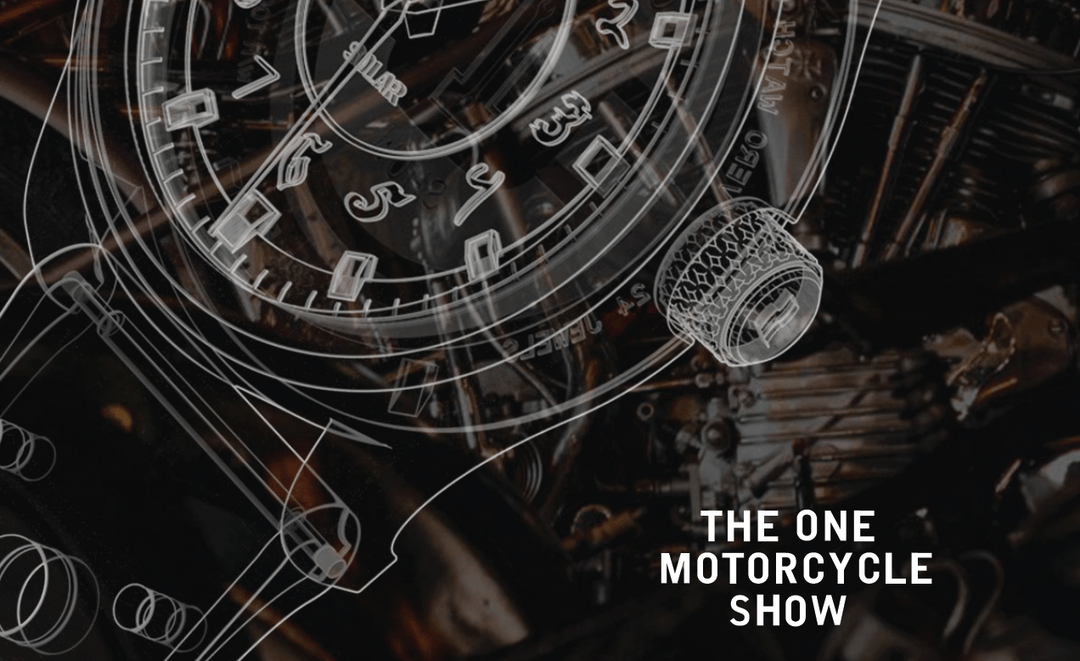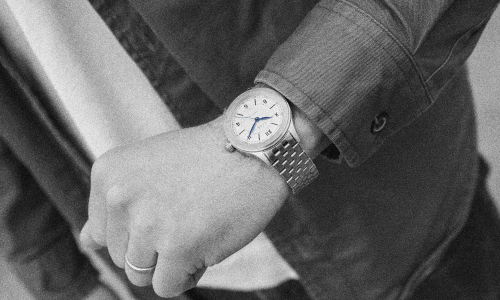Mechanical Watch VS Automatic Watch

Most of us grew up thinking that digital watches and analog watches- one that tick once per second- were all there was in the watch world. Then, we got older and realized that there was an entire world of watches that didn't need a battery to run and our collective minds were blown.
There are watches that are hand wound, self winding, battery powered, solar powered, and kinetic- a hybrid of an automatic movement that converts stored energy into electricity. In this article, we’ll focus primarily on mechanical watch vs automatic watches, ie., the differences between mechanical (or manual wind) and automatic watches.

What is a Mechanical Movement?
Mechanical watches have multiple names that all mean the same thing- mechanical, manual wind, wind up watches, or hand wound watches. Whatever you call them, they all operate the same way.
How does a mechanical watch work?
Mechanical watches run using a mainspring to provide power. This mainspring is wound by gently rotating the crown clockwise. These turns are captured in the mainspring as it winds and tightens. The mainspring then slowly releases this tension to turn gears that then turn the components in the cannon pinion. This is the heart of the watch and operates the hour, minute and second hands.
Mechanical watches have been around for hundreds of years and are considered traditional timepieces. They are often considered a symbol of luxury and are prized for their craftsmanship, durability, and accuracy. Mechanical watches are favored by watch enthusiasts who appreciate the traditional art of watchmaking and the mechanical engineering that goes into creating a mechanical movement.

What is an Automatic Movement?
An automatic watch, also known as a self-winding watch, is powered by the motion of the wearer's wrist. As your arm and wrist move throughout the day, the rotor of the movement rotates and winds the inner mainspring, providing the power to the watch's movement.
The key difference between automatic movement and mechanical movement is that the rotor is doing the work to wind the mainspring versus the wearer.
Automatic watches were invented in the early 20th century and have become increasingly popular over the years. They are a convenient choice for those who don't want to manually wind their watch every day, and they are often favored by those who appreciate the ease of use and minimal maintenance.

What is the difference between mechanical and automatic watches?
As mentioned above, hand-winding mechanical watches require the wearer to wind the watch by using the crown. This tightens the mainspring, which resembles a coil, and will slowly unwind over time. During this time, the watch will tick until its power reserve runs out. The wearer must wind the watch again when the power reserve is depleted. Most modern hand-winding mechanical movements will have a power reserve of roughly 2 days.
Automatic watches function in a similar way in winding to get the watch running, but do not require the wearer to wind the watch, if only just to get it started again after the power reserve has run down. Automatic watches have a rotor and a winding mechanism attached to the movement.
The rotor spins as the wearer's wrist moves. Whether walking, running, or moving your wrist around in any way, the rotor will spin. As the rotor spins, it winds the watch and keeps the mainspring fully powered. An automatic movement can theoretically run indefinitely, just as long as the wearer keeps the watch on.

Aesthetic Differences
With the rotor in an automatic movement comes added thickness, which is why manual wind watches are generally thinner than their automatic counterparts. Manual wind watches are usually not used in tool watches, such as dive watches, as it can become complex to disengage the winding mechanism when screwing in the crown.
Many watch companies will show off the inner workings of a manual wind watch. Each component within the movement is perfectly assembled together, forming a feat of engineering worthy of displaying.
We shared this same sentiment when we built our 36 Manual Wind Rally and Sunset watches. The case back had an open display with a pressed-in sapphire crystal to show off the quick turning of the balance wheel, as well as the heat treated screws that have a distinct purple and blue iridescent shine to them.

Is a mechanical watch better than automatic?
Automatic watches have quickly become a top-tier standard. Most people that are watch savvy will lean towards watches with automatic movements because of their ease of use. The idea of never having to swap out a battery, wind up the movement by hand, or even remember to charge it in sunlight is an enticing one.
But, the tactile feel of winding a watch has been said to be almost addictive. The vintage appeal of winding and the visual satisfaction of watching the inner workings come alive is what still draws watch lovers into mechanical watches.
If you're the adventurous type that likes to get outdoors and use your watches as a companion to your journeys, an automatic watch is likely the best way to go. Your adventure watch will stay fully wound and remain ticking until you decide to take a couple of days off. But if you’re the type that enjoys the technical side of your tools, and the occasional fidget gadget, then a manual wind watch would definitely be in your wheelhouse.

Life Expectancy: Mechanical Watch vs Automatic Watches
There are lots of people that shy away from wearing automatic and manual wind watches due to the assumption that they may have limited durability given their complex inner workings. The good news is that both automatic and manual wind watches can be serviced and regulated back to working order.
Watches that have been knocked around a bit or left in the drawer too long may have timing issues that can be addressed by servicing and regulating the movement in the watch. Realistically, the more you wear either type of watch, the longer its lifespan will stretch as you are keeping the oils inside smooth.
Servicing may take time and extra fees to get underway unless you bought your watch from VERO. We offer a 10-year, comprehensive, no-questions-asked warranty. But wait, there’s probably a catch, right? Nope. We have seen and serviced it all. Motorcycle crashes, jacuzzi fog, cracked crystals, scratched bracelets, torn NATO’s… No problem. Our motto is “if you can return it to us, you’re covered.”
Closing Thoughts
So, which will it be? A watch with an automatic movement, or a mechanical one?
We say, “why not both?” Keep an eye out in our upcoming newsletters for sneak peeks at our latest project. Hopefully, this article gave you some hints as to what might be in the works.



